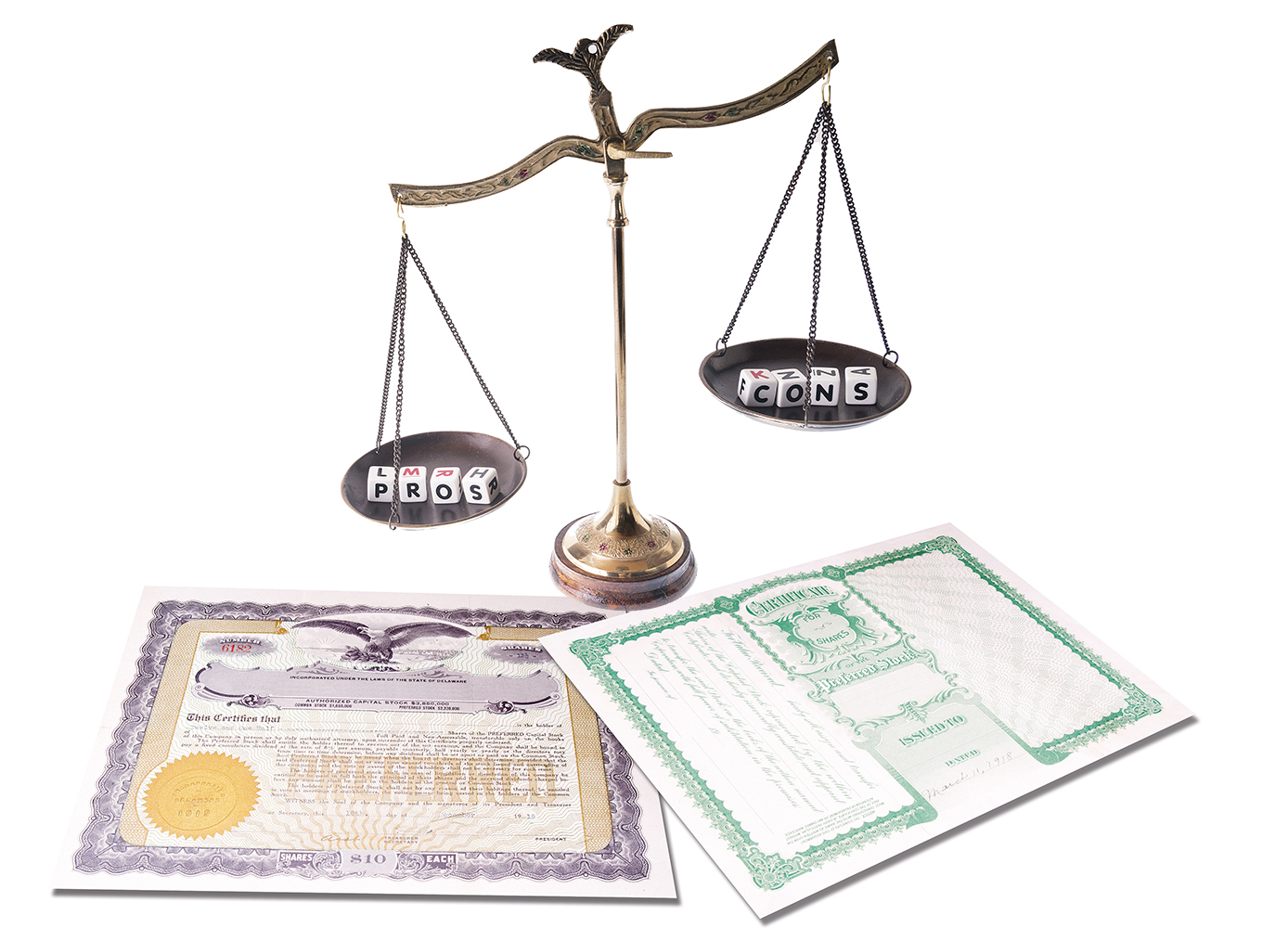Here’s our follow-up to last week’s article on why preferred shares can be a good fit for a retiree’s investment portfolio
By Olev Edur
We don’t hear much about preferred shares these days, amid all the noise about soaring high-tech stocks, international trade disputes, and interest rates that have been rising in fits and starts for a couple of years now. But that silence is deceptive—according to a recent Bank of Montreal bulletin, “Currently, the size of the preferred share market in Canada is approximately $60 billion, almost doubling in size over the last seven years. Given the current low interest rates, there has been an increase in investor demand for less volatile and higher yielding assets such as preferred shares.”
Preferred shares can be particularly suitable for some retirees’ investment portfolios. As we discussed last week INSERT, the income generated by preferred shares from Canadian corporations is accorded a dividend tax credit (DTC) that can offset as much as 100 per cent of the tax otherwise levied on those earnings. In certain cases, the credit can actually exceed the tax rate, offsetting tax on other income.
(For tax purposes, there are two types of credit for Canadian-source dividends—one applies to large publicly traded operations and a lesser one applies to small private businesses. This article focuses on the former, since it applies to the exchange-traded shares in which most retirees would be investing.)
Furthermore, preferred share yields are typically higher than for bonds and other interest-bearing securities. A report on preferred shares published this past spring by CIBC Private Wealth Management, for example, found that while average annualized yields during the first quarter of 2018 ranged from 4.11 to 5.79 per cent, depending on type of share, and the S&P/TSX Preferred Share Index yielded 4.34 per cent, the FTSE (Financial Times Stock Exchange) Corporate Bond Index yielded just 3.02 per cent.
Higher yields combined with lower taxes can result in dramatically different after-tax returns. For the typical retiree in, say, a 25 per cent tax bracket, that average three per cent bond yield would leave 2.25 per cent in pocket.
By comparison, the DTC might reduce the same person’s combined federal/provincial tax to seven or eight per cent (depending on province, as well as total income), so he or she could keep almost four per cent of that average 4.3 per cent dividend; those with no other income could keep the entire 4.3 per cent—almost double the after-tax bond result—and maybe get some further tax help to boot. The value of the credit diminishes as total income rises, though, and those in the top tax bracket would keep perhaps two-thirds of that 4.3 per cent dividend, again depending on province.
The Nature of the Beast
So what exactly are preferred shares, and how do they differ from common shares? Where might they fit into a retiree’s investment portfolio, and how do you select from the wide variety that is currently available?
Preferred shares are issued mostly by large blue-chip corporations that seek capital but don’t want to sully their books with more debt or dilute the number of shares available for trading by issuing more common shares. So they create another class of share with some significant differences from common shares, including the preferential payment of steady dividends and prior access to liquidation assets in case of disaster (after bond and other debt holders). They are still equities for accounting purposes, but as a result of their features, they are in some ways more akin to bonds.
Preferred shares are generally issued with a fixed par (face value), are usually non-voting, and pay dividends according to a pre-set formula:
- Perpetuals, as the name implies, pay a fixed dividend until redeemed by the issuer; they can’t be sold except in an open market, and their market value can be highly sensitive to interest rate changes.
- Rate resets allow for periodic dividend rate adjustments, making the face value less vulnerable to market forces.
- Floating rate preferreds are linked to a key interest rate, usually the prime rate, so the share value is even less exposed to the vagaries of the market.
- Retractables can be redeemed by the holder at par on a certain date, so the face value is locked in, provided of course that you keep the security until its due date.
Then there are preferred shares with combinations and permutations of the above features, all with different rates and dates and other wrinkles; some preferreds, for example, may have a cumulative provision whereby any missed dividends must be paid before common shareholders get theirs; others may have different features. Overall, though, preferreds are generally recognized as falling into a unique investment risk/reward niche somewhere between bonds and equities, with the type of preferred and its features determining where a particular issue falls within that range.
“Preferred shares are hybrids,” says Steve Rogers, an investment strategist for Investors Group in Toronto. “In some aspects they are like bonds, and in some aspects they are like equities. That’s a simplistic characterization, but in terms of risk, they fall somewhere between equities and bonds. All other things being equal, they are safer than common shares but not as safe as bonds.
“Preferred shares also have value in terms of diversification,” Rogers adds. “Because of their unique characteristics, the correlation to other classes of investment is fairly low.”
Carol Bezaire, vice-president of tax and estate planning at Mackenzie Investments in Toronto, agrees that preferreds straddle the middle ground between fixed income and equity: “Preferred share prices are less volatile than common shares because of the guaranteed income,” she says, adding, “You always know you are going to get that dividend, so the share value doesn’t change as much as with common shares.”
It’s Complicated
Given the complexities inherent in preferred shares, choosing particular issues is a game best left to the professionals.
“Preferred shares are complicated,” Bezaire says. “It’s not only the securities themselves—you also have to consider the merits of the company issuing them. I might like Canadian Tire, for example, but I don’t know enough about how Canadian Tire works to make a decision about its preferred shares.”
As a result, both Bezaire and Rogers recommend that if you’re looking into getting preferred shares into your portfolio, you’re probably better off having a skilled professional make the choices, or else buying into an income-oriented mutual fund with preferred share content.
“There are a number of conservative funds you can choose from that hold preferred shares and that give you the desired diversification,” Bezaire says. “It’s a better option, unless you have a very strong knowledge of the market. If you have the skills and the time to do your research, then by all means, go for it. Otherwise, let someone do it for you.”
Of course, if you have a favourite company and you think its preferred share offerings seem competitive, you could always buy a few yourself and not worry too much about whether they’re the best available offerings on the market. Just don’t go overboard—preferred shares can add some diversification to your holdings, but they shouldn’t become a dominant element of your portfolio. Bezaire suggests, for example, that you might want to invest 10 per cent of your holdings in mutual funds with preferred share content.
Beware the Clawback
There are a couple of final points to keep in mind with respect to preferred shares and dividend income.
The DTC applies only to investments that are not held in tax-sheltering registered accounts such as RRSPs and RRIFS, or in TFSAs. If you have non-sheltered as well as sheltered accounts, the preferred shares are best held in the non-sheltered accounts.
In addition, the gross-up provisions of the DTC mean that in some cases, the artificial inflation of your income could result in the reduction of benefits such as Old Age Security (OAS) or especially the Guaranteed Income Supplement (GIS). “The issue with dividends if you are getting OAS is that the gross-up could result in a 15 per cent clawback of benefits once your income is high enough,” Rogers says. “It’s even worse if you receive the GIS, where the benefit reduction would be 50 per cent on each dollar of added income.”
These two caveats aside, however, Rogers and Bezaire agree that preferred shares can be a welcome adjunct to most retirees’ savings portfolios. They can provide a steady income that is higher than for bonds and is preferentially taxed to boot, they are relatively safe (in relation to common shares and even some bond issues), and they offer an added degree of diversification that is uncorrelated to other investments. In sum, Bezaire says, “Are they a good idea for retirees? Yes.”
Photos: iStock/wpd911 (balance) and qingwa (shares).






